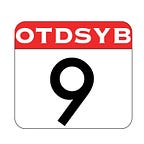Survey of the Mason-Dixon Line Completed
Have you ever noticed how some things, like historical artifacts, become so ingrained in a culture that everyone knows about it? Like, the Mason-Dixon Line, you’ve heard of that before, right? Everyone has. But, can you tell me where it is and what it was for?
Today is October 11, 2017 and on this date, 250 years back, the survey of the Mason-Dixon Line was completed.
The Mason-Dixon Line was implemented to settle a border dispute between the colonies of Maryland, Pennsylvania, and Delaware, and can still be seen on modern maps as the straight, horizontal border between Maryland and Pennsylvania, and the vertical division between Delaware and Maryland. It is named after the team of Charles Mason and Jeremiah Dixon, the surveyors in charge of the project.
The border dispute, known as the Penn-Calvert Border Dispute, originated in 1632 with King Charles I granting Cecil Calvert a charter for what would become Maryland, with a northern border set at the 40th parallel.
Later in 1681, King Charles II granted William Penn a land charter with the southern border set at the 40th parallel. The only problem was that the two charters described the actual location of the 40th parallel differently, as they were based on different, and flawed maps.
It must be noted that during this entire dispute, Dutch colonists laying claim to Delaware were also jockeying for any advantage they could get.
Decades of appeals to the English Crown, civil negotiations, and even violent border wars passed. By the 1730’s the dispute had reached its boiling point and efforts were undertaken to resolve the borders once and for all.
This proved to be a slow process, but the negotiations proved acceptable to all parties involved. By the time Mason and Dixon were enlisted to begin their survey in 1763, resolution was a welcomed goal.
The actual nickname of the “Mason-Dixon Line”, did not gain popularity until five decades later, when it was referred to as such as a comparison to western borders whilst legislators were debating the Missouri Compromise and whether new states would be admitted as free or slave states.
As the American Civil War drew nearer, the Mason-Dixon Line became an unofficial cultural and symbolic border between the north and south, and for this reason, it is still remembered today.
Thanks for reading, and be sure to check back tomorrow for the final chapter of a bewitching tale.
Creating quality content on a daily schedule requires a massive commitment, and my desire is to not only do that, but expand into even more mediums (audio podcasts, web videos, etc.). If you enjoy these posts, or would like for them to be available in other formats, please consider supporting me on Patreon. Just $1 a month will help a ton, as well as get you access to exclusive content. Thanks.
